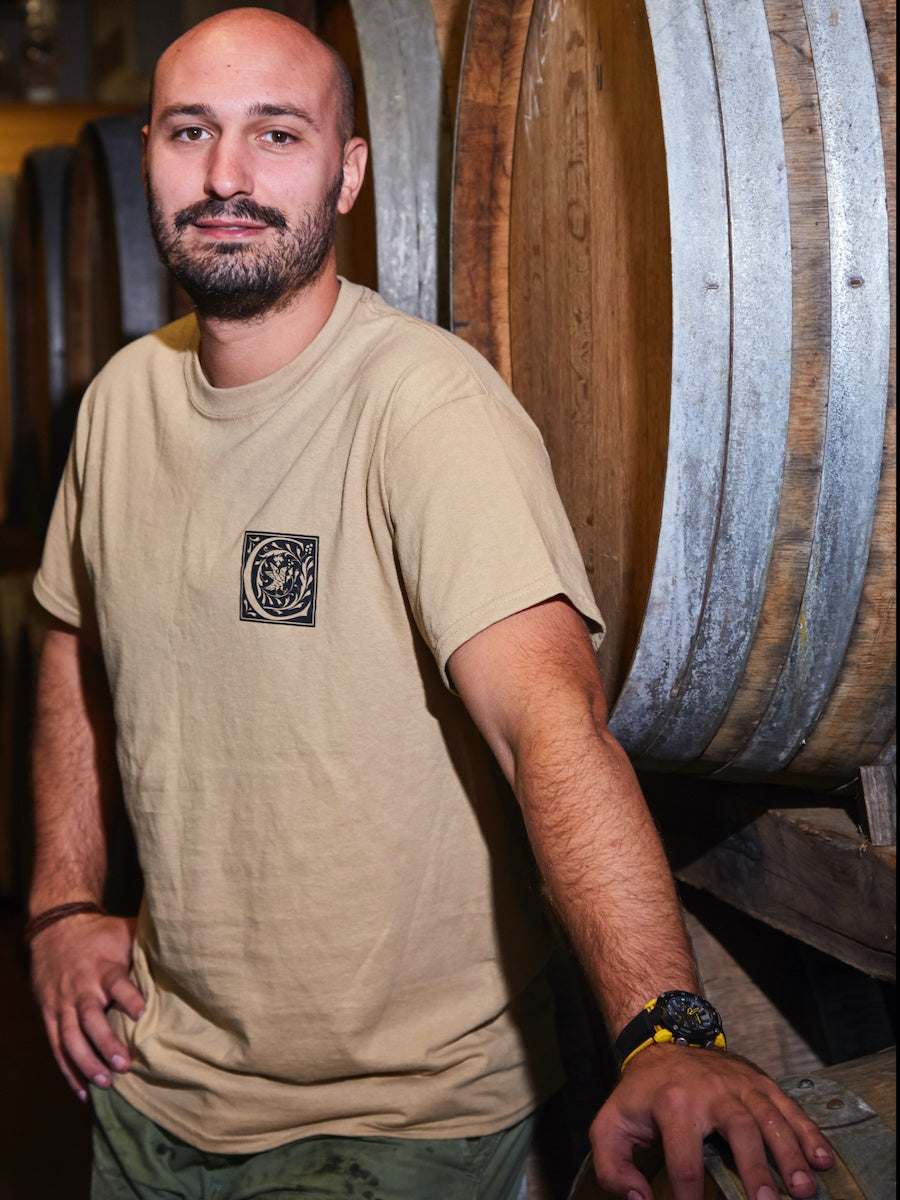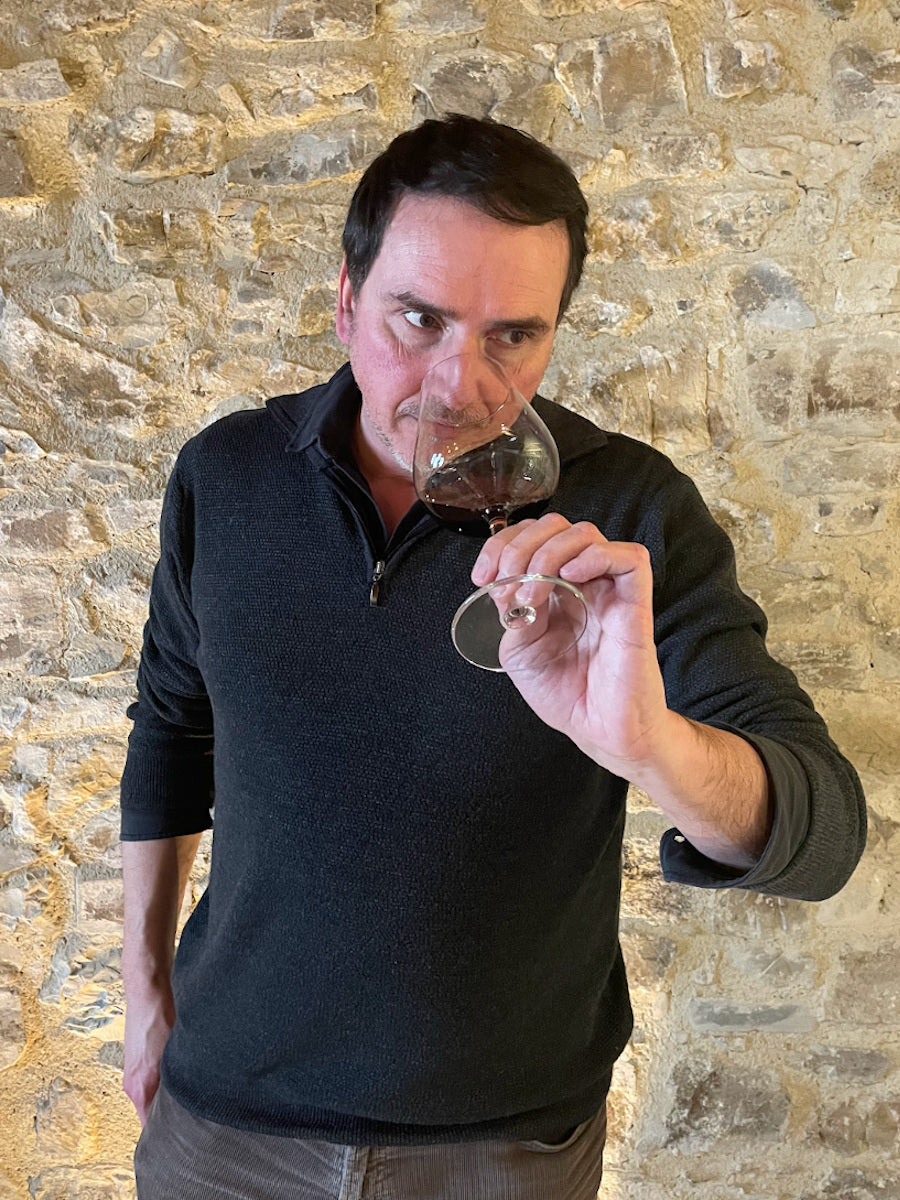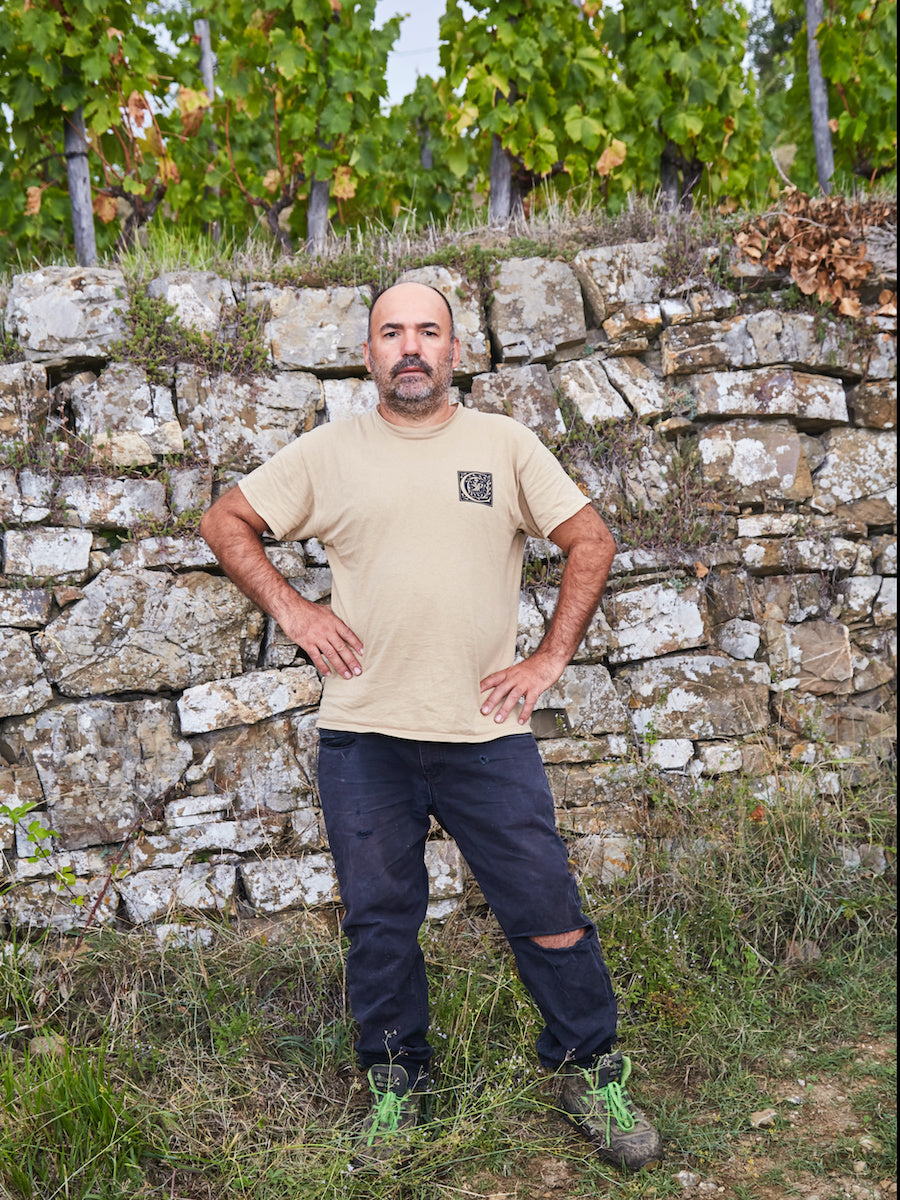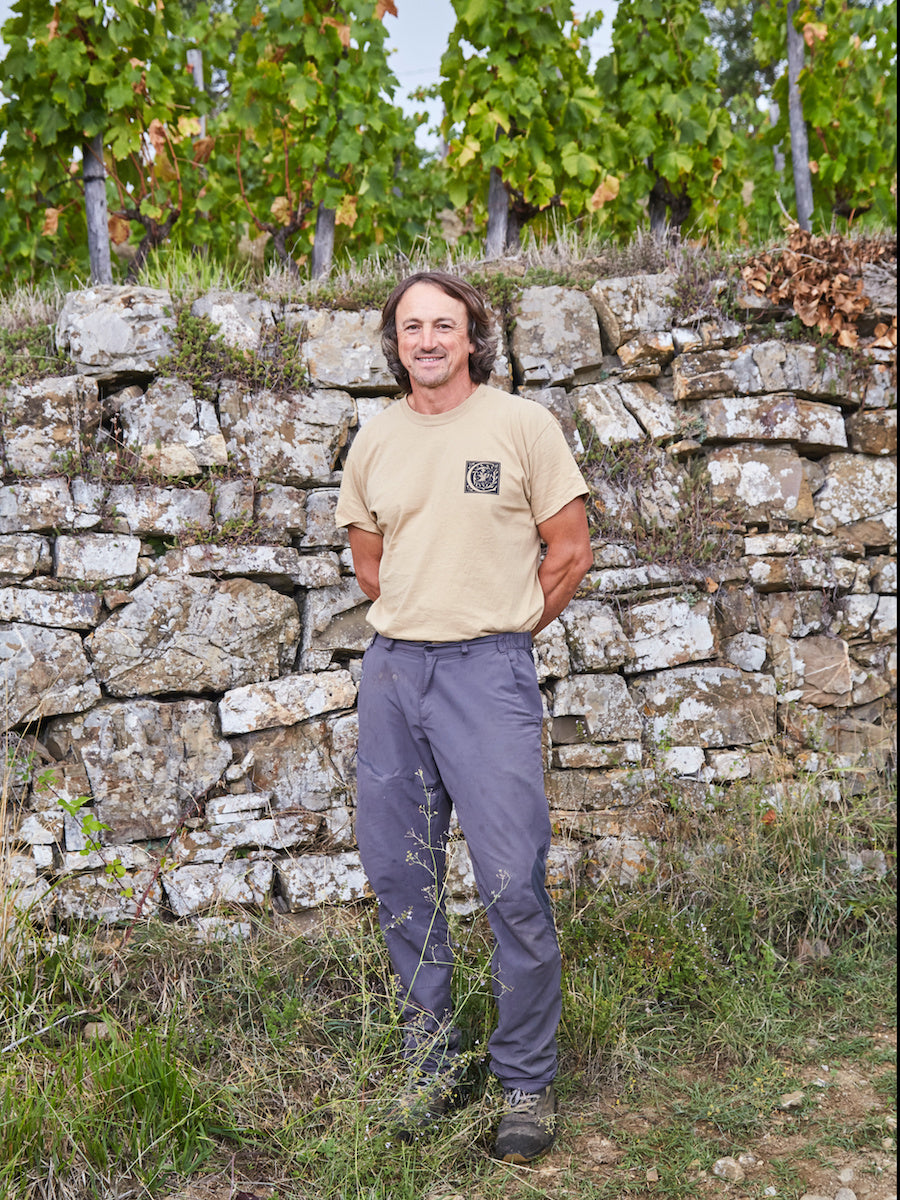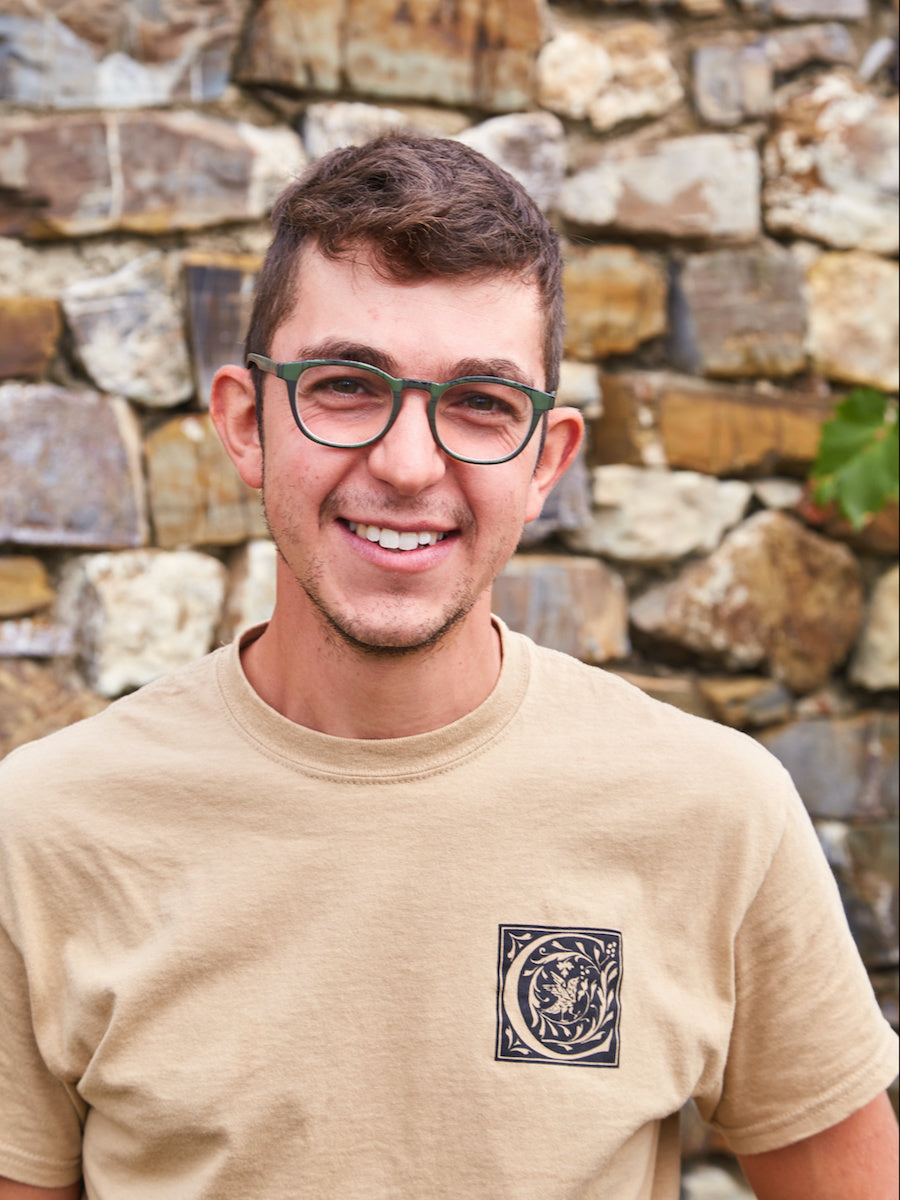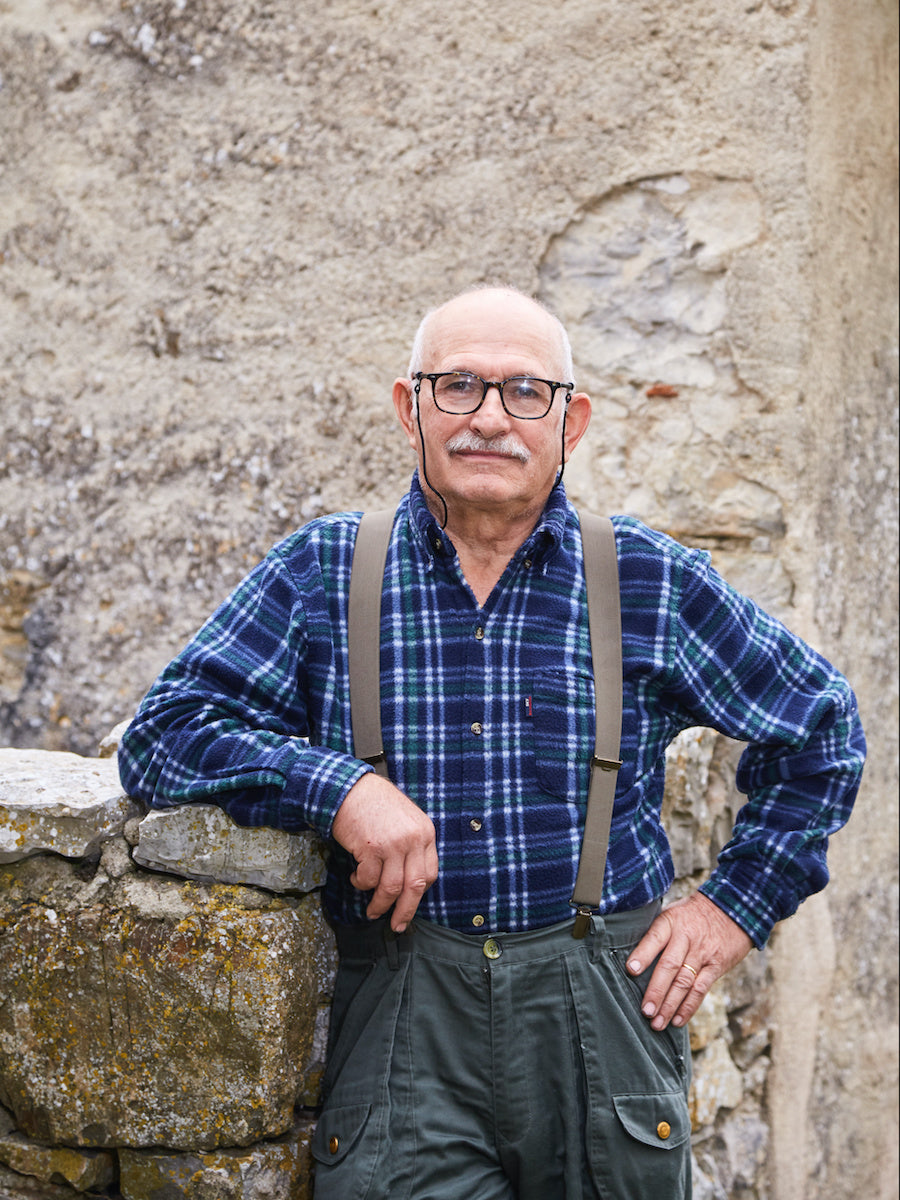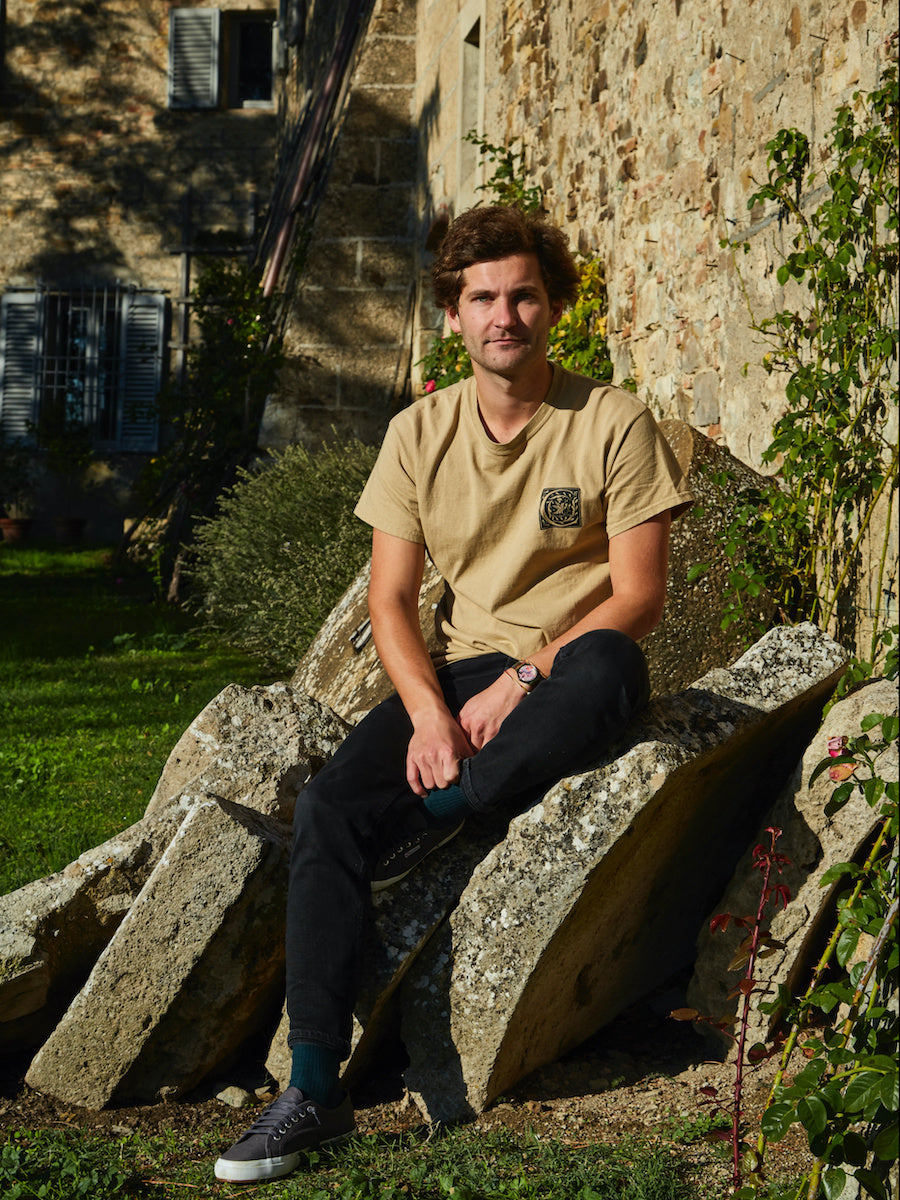Land & People

Soil & Terrior
Over fifty years of organic agronomy has kept the land of Castagnoli in natural condition - a living ecosystem, hosting extraordinary biodiversity.
The primary soil is Galestro, a friable clay shale. Under the influence of the sun, frost and rain, Galestro breaks into prismatic fragments, yielding nutritious minerals to the vines.
Pietraforte (literally "strong rock"), a sandstone with fine grain and carbonate cement, gives structure and texture to Castagnoli's soil. Pietraforte was used in the construction of many iconic buildings in Tuscany, such as the Palazzo Vecchio in Florence and the Torre del Mangia in Siena.
Vineyards
We aim to bring out the true greatness and originality of Sangiovese. A grape variety that nowhere else in the world is able to produce wines combining complexity and drinkability, acidity and minerality. Following our mission, we have divided our eleven hectares of vineyards into 19 different parcels. These are cared for, harvested, and vinified separately, allowing us to select and create wines, based on the uniqueness of fruit that each Cru has produced in a given vintage.
-
Salita
Our Grand Cru. Source of our single-vineyard Salita IGT.
The highest fifteen south and southwest-facing stone terraces that lead up to the estate are planted with one to three rows of vines. The trellis system of the Vigna Salita is a bush vine system (Alberelli), which is an ancient Tuscan technique of growing vines. Over 50 meters of altitude difference between the highest and lowest terrace, produce extraordinary complexity and elegance. Olive trees are planted on the terraces in cohabitation with vines. These add to the biodiversity in our vineyards, which results from decades of organic agronomy.
-
Labirinto
The name suggests the structure of the vineyard Labirinto. Subdivided into Labirinto, Labirinto Sud, and Labirinto Ovest, an intricate maze of stone terraces is connected through ancient little stairs.
Vines are planted as Alberelli and olive trees coexist with vines in the complicated little labyrinth of nature.
-
Scuole
Technically the highest few terraces of Castagnoli that present the best view of the winery and the Chianti region behind it. The building above the Vigna Scuole used to be a school for the local children. Sangiovese vines are planted on single or double rows on the ancient stone terraces.
-
Ginestrini
Divided into Ginestrini Bassi (lower part) and Ginestrini Alti (higher part) these two vineyards are located below the vineyard Arcobaleno and therefore share its shape of an arch. The two ginestrini vineyards, although siblings, often produce in interestingly different and complex fruit, like siblings, and are therefore harvested and vinified separately.
Lotus used to grow here abundantly and hence lending its Italian name "Ginestrino" to the vineyards.
-
Cannaio
The biggest vineyard of Castagnoli, just below the terraces leading up to the winery. Planted with Sangiovese and another Tuscan grape variety, Canaiolo. Vines are planted in a south-facing Guyot trellis system at an altitude of 360 meters.
Cannaio Sotto and Cannaio Sopra are harvested and vinified separately to allow these two vineyards to express their own microclimates and microterroirs.
-
Arcobaleno
Arcobaleno, rainbow in Italian, received its name from its original shape. Like an arch it bends itself from west to east and faces south.
-
Solatio
Solatio are the names of three vineyards that surround our Grand Cru Salita. Solatio al Pozzo is situated below the cyprus row leading up the winery. Solatio Triangolo is the triangle shaped part below Salita. To the west of it is Solatio Ovest, which provides a combination of Castagnoli's soil types. Galestro loam, larger stony Galestrino and larger limestone-clay soils with gray-blue clay lenses.
-
Leccio
The lowest of Castagnoli's vineyards at 330 meters.
-
Salici
Adjacent to one of Castagnoli's forrests, Vigna Salici produces very fresh and fruit-forward grapes, giving our Chianti Classico an early drinkability and smoothness. The vineyards is separated into Salici Bassi and Salici Alti.
-
Laghi
Situated in the south of the estate, the two vineyards Laghi Alti and Laghi Bassi are cared for, harvested and vinified separately and often can be identified distinctively in our finished Chianti Classico Annata.
-
Barsaglina is the name of a rare traditional Tuscan grape variety. However, only Sangiovese is planted here. Eight terraces divide this small vineyard of only 0,5 hectares.
-
Orto Capanna
Very close to our cellar where the wines finish their maturation in the bottle, Vigna Orto Capanna has a relatively high altitude and south-west aspect.
Our people
The Schefenacker family has been producing wine for three generations. Since 2005 they are the driving force behind Castagnoli in their mission to preserve the historic estate and its vineyards. While honouring tradtions, their focus has been to produce pure and innovative Sangiovese wines.
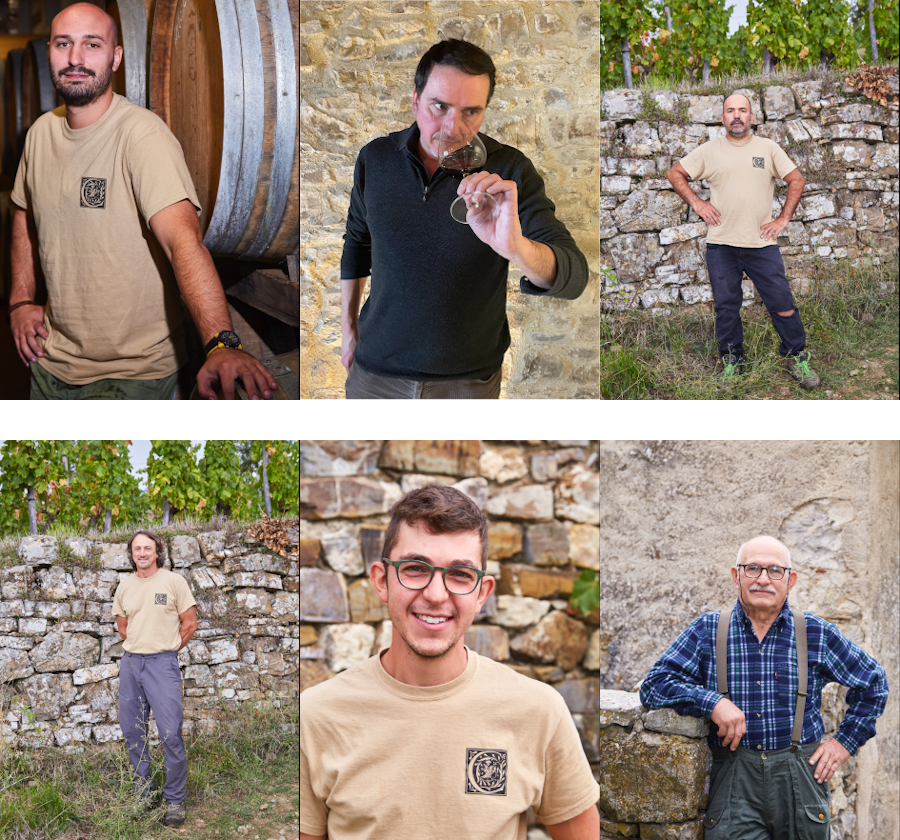
Born and raised in Tuscany, Filippo studied Viticulture and Enology in Florence and holds a Master's at UNICATT Piacenza, specializing in the intersection of innovation and tradition. Previously, he has worked in Chianti at Isole e Olena and Tolaini and gained experience in South Africa at Vondeling Wines. Passionate about sustainable viticulture and fascinated by the variability of terroirs, he is the winemaker at Castagnoli.
Born in Trentino, Giampaolo Chiettini graduated from the school of enology and viticulture of San Michele all'Adige. He has been living and working in Tuscany since the late 80s, where amongst others he was the assistant winemaker at Isole e Olena for eight years. In his work, in the vineyard and in the cellar, he puts the utmost respect for the diversity of every single element. Giampaolo has been Castagnoli’s oenologist since 2012.
Stefano Pinna comes from Sardinia. Raised in a family devoted to viticulture in Sulcis, he has been taking care of vines since he was a little boy. In 1997, he moved to Chianti with the aim of enriching himself professionally, working for many prestigious wineries. In 2017, he joined the Castagnoli family, covering all the roles inherent in vineyard and cellar operations. Undisputed lover of Sangiovese.
Davide Risso is of Piedmontese origins. From the beginning of his career in the wine sector, driven by a great passion for wine, he has gained work experience in Piedmont and Tuscany, in particular Langa, Chianti Classico and Montalcino. In all these years he has distinguished himself for his skills as a tractor driver, winemaker and cellarman. He has been working in Castagnoli since 2015. His favorite wines are those in purity from Sangiovese and Nebbiolo grapes and the fantastic wines of Burgundy.
Michele Montibeller was born and raised in Trentino. After he obtained the agrotechnical diploma at the Agricultural Institute of San Michele all'Adige, he worked for many years in a historic winery in the area, approaching both the world of wine and distillation. In 2017, he moved to Tuscany to continue working in the wine sector. In 2019 a series of coincidences lead him to the splendid hill of Castagnoli to take care of the vineyards and olive trees.
Enzo Migliorini was born in Radda in Chianti. When he was a kid, he moved with his parents to Castagnoli. Today he is 73 years old, which means he has been working at Castagnoli for over 50 years. It is here where he met his wife and raised two sons. Naturally, Enzo knows every corner and every story about the winery and its vineyards.
Growing up with Riesling and Lemberger in Southern Germany, Tim is now managing the family estate in Tuscany. Drawn to the greatness of Sangiovese, he believes in the endless potential in vinifying the grape on its own and creating beautiful single-variety wines from the many microclimates of Castagnoli’s terraces.
History
The first mentioning of Castagnoli dates back to 998 AD, when Ugo “The Great”, Marquis of Tuscany, donated the land to the Abbey of San Michele di Marturi. In the subsequent centuries it was owned by the powerful feudal family of the Squarcialupi, who exercised immense political power over the entire region and constructed many of the buildings that today form the winery.
In 1432, Arrigo di Squarcialupi, at the time the commissioner of Florence, promised to deliver the castle and fortress of Castellina to the Holy Roman Emperor Sigismund of Luxembourg, who rewarded him by making him count of the castle of Castagnoli. In 1529, Caterina, widow of Antonio di Jacopo Squarcialupi, sold Castagnoli to Noferi di Niccolò di Alessandro Strozzi.
The ancient Florentine family of the Strozzi has long been the great rival of the Medici family, both in banking and politics. Until their exile from Florence in 1434, the family has been among the wealthiest in the city. When the Medici took control over Florence, the Strozzi ruled Siena.
Over the 16th century, a branch of the Strozzi carried out land consolidation of the Chianti region to form organized agricultural businesses. The castle of Castagnoli then served as the business center of their properties. Francesco Strozzi constructed the main house of the winery today, as well as the church dedicated to Santa Lucia. Castagnoli was referred to as the “Palazzo di Capitan Francesco Strozzi”.
Born in Florence, Capitan Francesco Strozzi went to Rome as a young man where he met his distant relative Piero di Filippo Strozzi. Piero was the appointed Lieutenant of King Henry II of France, preparing the French and Sienese troops for the probable war against Duke Cosimo I dei Medici. In 1555, after an eight month long siege, the city of Siena surrendered to the Florentine troops. Francesco fled to the city of Montalcino, before he joined the army of King Henry II of France. It was at that time, when Francesco was declared a rebel and banned from the Florentine state. Ten years later, in 1566, after a letter written by Francesco’s mother, Duke Cosimo I dei Medici pardoned him, allowing him to return to Florence, where he served as a Commander under the State of the Medici.
In 1616, Capitan Francesco Strozzi’s granddaughter Francesca married Vincenzio d’Antonio Salviati, a member of an illustrious family in the Florentine aristocracy. In 1478, the Salviati were at the centre of the Pazzi conspiracy to assassinate Lorenzo and Giuliano de Medici, killing Giuliano, but failing to capture Lorenzo. Subsequently, Francesco Salviati, archbishop of Pisa, was among the five conspirators who were executed and hung in the windows of the Palazzo della Signoria. The Salviati owned Castagnoli from 1616 to 1824 when Ferdinando Ticci di Francesco purchased what was now referred to as “Fattoria Castagnoli”. Until the end of sharecropping in the 1970s, the property remained in the hands of the Ticci.

